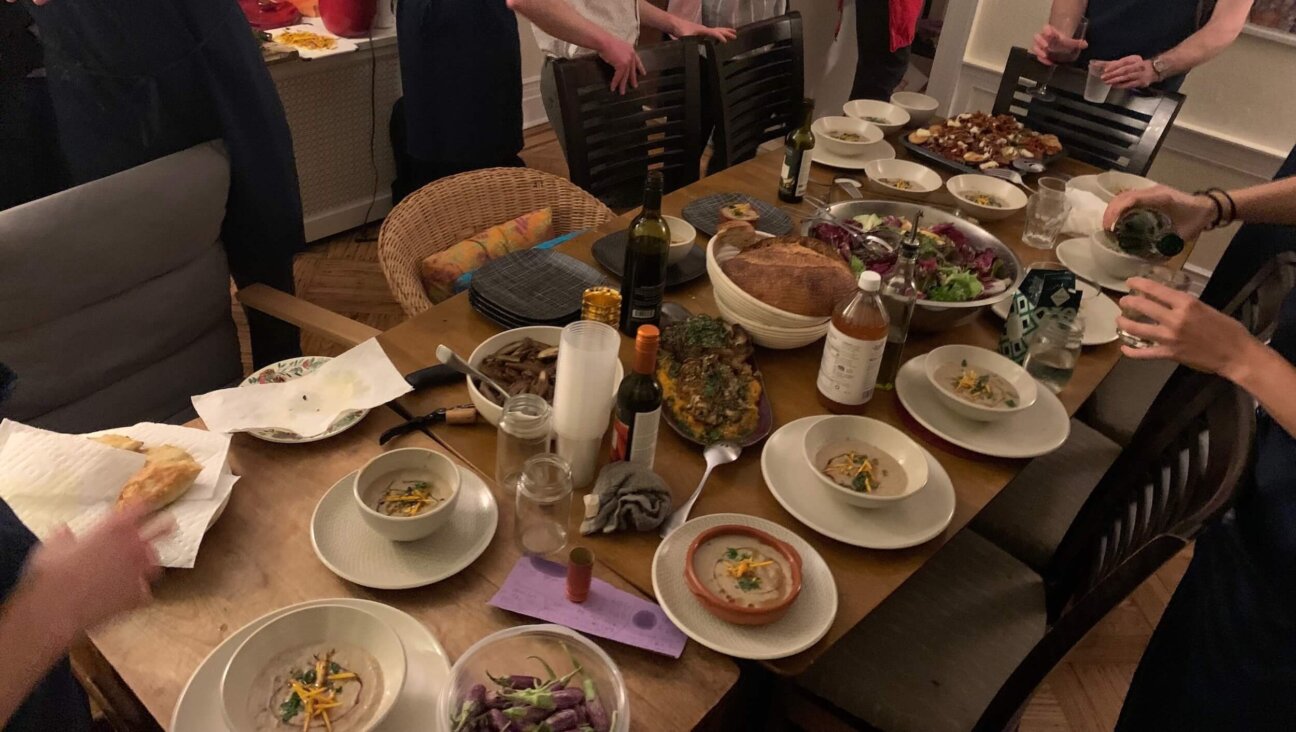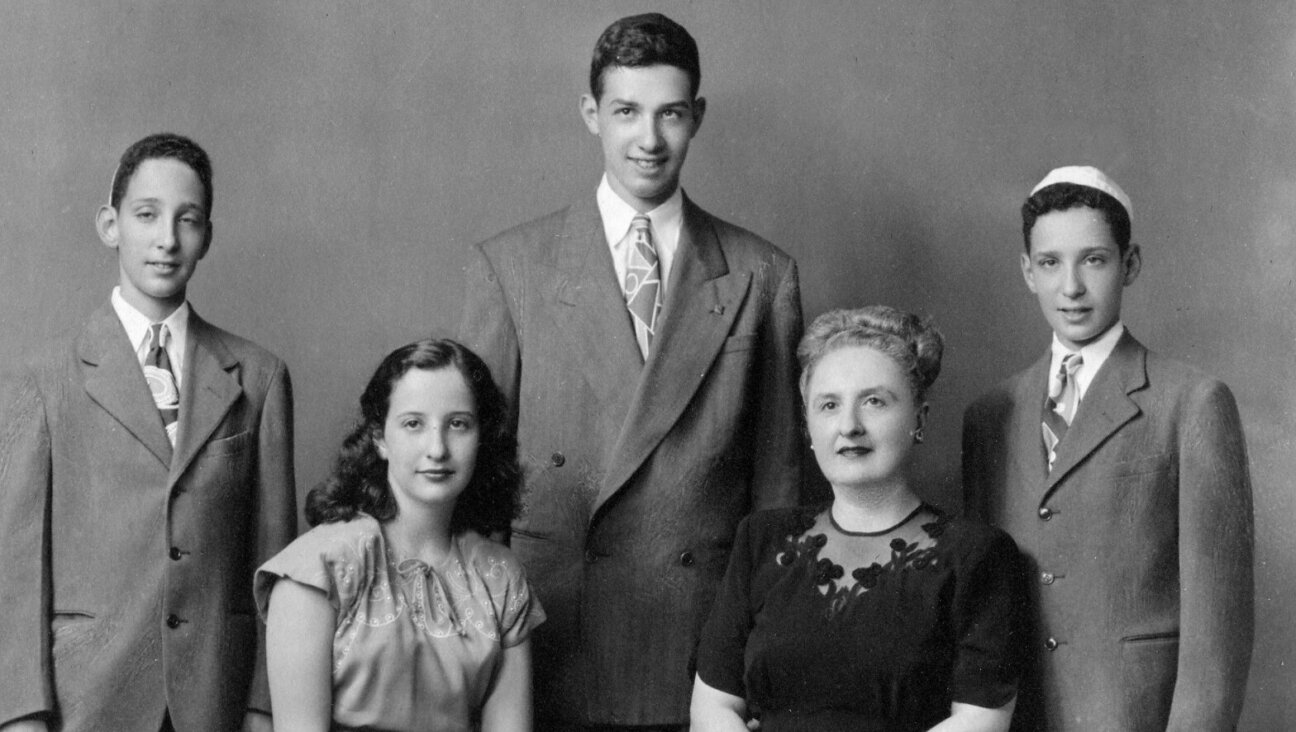Baked Okra and Baklava — A Hazan Family Shabbat

Image by Photo by Joseph De Leo
As we opened the door of my Sephardic immigrant grandparents, Nonno David and Nonna Giulia’s Manhattan apartment, we might be greeted by the seductive sounds of Eartha Kitt singing Ushdakara, the Turkish lullaby, or perhaps Melina Mercouri’s Ta Pedia Tou Pirea. Nonno David, who had little formal schooling, spoke eight languages and often played some of his favorite music before Shabbat. I loved watching him happily dancing in the living room, getting in the mood for a splendid meal with family.
The smells of Nonna Giulia’s delectable cooking, which we all looked forward to, filled the apartment. There was usually a plate of Borekitas waiting for us — little pies filled with either spinach, eggplant or cheese, to wet our appetites before dinner. Of course, the house was immaculate, the table was set with her special Shabbat cloth and the candlesticks were ready to be lit on the living room coffee table.
For Shabbat, Nonna Giulia always prepared everything ahead of time. Although my grandparents had moved to the United States from Italy, they never served pasta as a first course. In Sephardic tradition, it was always a rice dish with tasty bits of pepper and tomato in it. I still make this for my family today and the recipe is in my new book, “Hazan Family Favorites.” Along with the rice there might be a tender veal stew made with fresh peas if they were in season, if not then with sweet carrots.
In deference to my father, who does not like fowl, Nonna Giulia never served chicken, although almost all other kinds of kosher meats were seen at table. A side vegetable was a must, and often it was baked okra with tomatoes, my favorite. I would always try to get some of the browned ones from the top layer, which had a rich, caramelized flavor. In fact, my grandfather often complained they were not “burned” enough. In typical Italian style, after the meat, we would have a salad, which might be either tender lettuces, baked beets, or asparagus, dressed with good extra virgin olive oil and vinegar.
To cleanse the palate, before dessert, she would serve candied citrus peels. My favorite were the ones she made from grapefruit pith. They were soft, sweet and bitter at the same time. Finally, dessert was served. Either her fragrant and moist almond cake that is still my father’s favorite, or her fabulous baklava. Imagine my pleasure when I discovered that my wife, Lael made a baklava that was very similar to Nonna Giulia’s, which I naturally also had to include in the book. Perhaps it was from that dish that I knew she was my beshert, my intended one.
Okra with Fresh Tomatoes
From “Hazan Family Favorites” by Giuliano Hazan Time from start to finish: 1 hour Serves 4 1 pound okra
½ small yellow onion
2 tablespoons extra virgin olive oil
1 medium garlic clove
12 ounces fresh tomato
2 tablespoons freshly squeezed lemon juice
Salt
1) Rinse okra in cold water and cut off the stem end. Peel and thinly slice the garlic.
2) Put the olive oil in a 10 – inch ovenproof skillet or shallow braising pan and place over medium high heat. When the garlic begins to sizzle, add the okra and season with salt. Stir for about 30 seconds then add ½ cup of water. Adjust the heat to a steady simmer, cover, and cook until tender, about 20 minutes. Check the pan periodically and stir. If all the liquid evaporates before the okra is tender, add a more water, ¼ cup at a time.
3) While the okra is cooking, preheat the over to 400° on the convection setting, if available. Peel the tomatoes with a vegetable peeler and remove the seeds. Cut the tomato into ¾ – inch dice.
4) When the okra is tender, remove from the heat (if there is still liquid in the pan raise the heat and let it evaporate first). Top with the tomato pieces and season lightly with salt. Add the lemon juice and place in the preheated oven. Bake uncovered for 15 minutes then change the oven setting to broil, Once the top begins to brown, about 5 minutes, remove from the oven. Serve hot.
A message from our Publisher & CEO Rachel Fishman Feddersen

I hope you appreciated this article. Before you go, I’d like to ask you to please support the Forward’s award-winning, nonprofit journalism during this critical time.
We’ve set a goal to raise $260,000 by December 31. That’s an ambitious goal, but one that will give us the resources we need to invest in the high quality news, opinion, analysis and cultural coverage that isn’t available anywhere else.
If you feel inspired to make an impact, now is the time to give something back. Join us as a member at your most generous level.
— Rachel Fishman Feddersen, Publisher and CEO





















